
Where the Flowers Grow - Life Zones
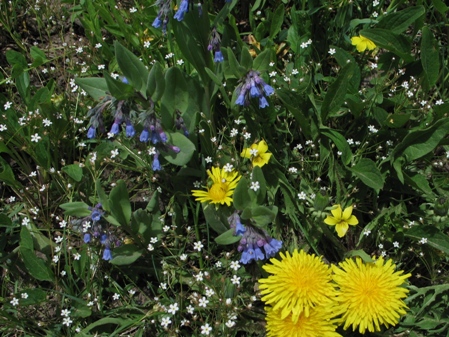
This guide identifies plants in five life zones:
- Plains & Semi-desert - 4,000 to 6,000 feet
- Foothills & Mesas - 6,000 to 8,000 feet
- Montane - 8,000 to 10,000 feet
- Sub-Alpine - 10,000 feet to timberline, about 11,500 feet
- Alpine - above timberline
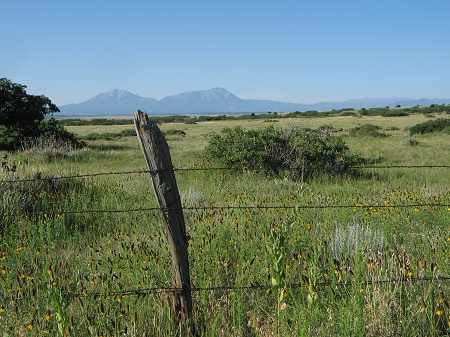
The Spanish Peaks, Huerfano County, Colorado
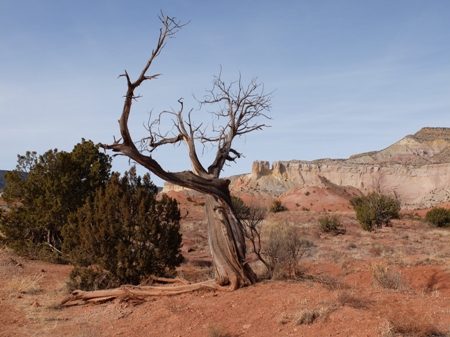
Ghost Ranch, Rio Arriba County, New Mexico
Plains and Semi-desert
4,000 to 6,000 feet
East of the Continental Divide, where the Great Plains meet the Rockies, the land is flat, dry and fairly treeless. However, many wildflowers thrive despite, or because of, cultivation, irrigation and ranching in these grasslands.
From 5,000 to 7,000 feet west of the Divide is a dry, rocky, sandy habitat of semi-desert canyonlands and scrubland of saltbush and cactus. Many species have adapted to live in this arid climate with small or succulent leaves, long tap roots and thorns to protect themselves.
Spring comes as early as March and wildflowers are abundant, if there has been sufficient winter snow or spring rain.

Water Canyon, Los Alamos County, New Mexico
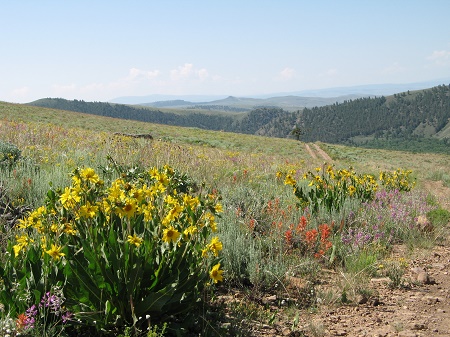
Almont Triangle, Gunnison County, Colorado
Foothills and Mesas
6,000 to 8,000 feet
At lower elevations on the eastern slope of the Rockies and in the canyons and mesas of Northern New Mexico, piñon pine, juniper and scrub oak thrive.
At higher elevations these give way to open
woods of Ponderosa pine, Douglas fir and blue spruce. A few aspen groves
are scattered amongst the sagebrush. Shrubs like sagebrush, chokecherry
and mountain mahogany thrive.
Cottonwoods and willows can be found along riverbanks and streams.
Wildflowers begin blooming in April.
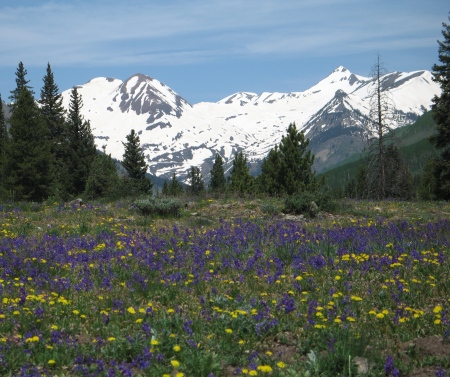
Slate River Valley, Gunnison County, Colorado
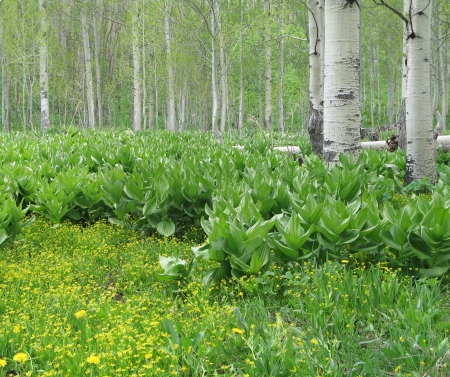
Snodgrass Mountain, Gunnison County, Colorado
Montane
8,000 to 10,000 feet
As we approach 9,000 feet the sagebrush gives way to more aspen groves and lush meadows of flowers and grasses in forest clearings. There is enough moisture in this zone to support dense forests.
Willows crowd the sides of creeks, coniferous forests of spruce and fir are found on the slopes as we approach 10,000ft.
The greatest variety of flowers can be found in the Montane zone because there are so many habitats; wet and dry, sunny and shady, open and wooded, rocky and sandy, pristine and disturbed. They start blooming in mid-June and are at their peak in July.
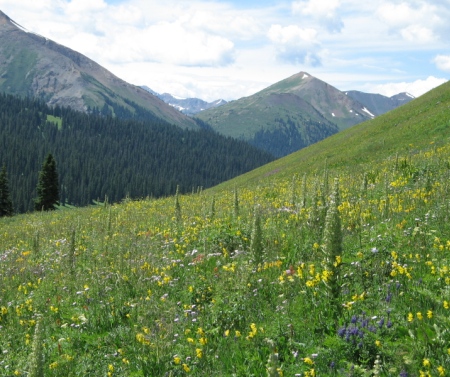
West Maroon Pass Trail, Gunnison County, Colorado
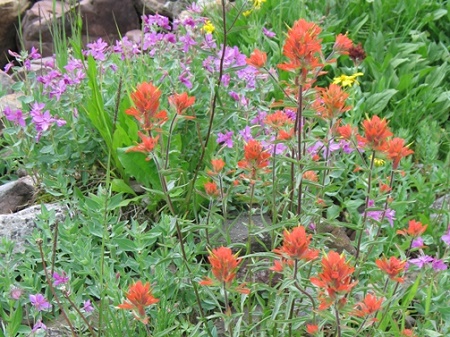
Subalpine
10,000 feet to timberline
Subalpine Fir and Engelmann Spruce dominate up to timberline or tree line, which is at approximately 11,500 feet.
This too is a lush growing environment. Meadows are filled with flowers. The snowmelt creates wet places and rushing creeks that are profuse with flowers.
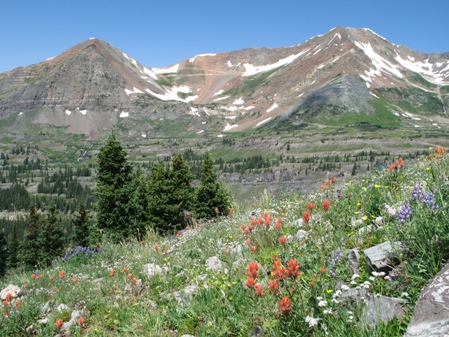
Scarp Ridge, Gunnison County, Colorado
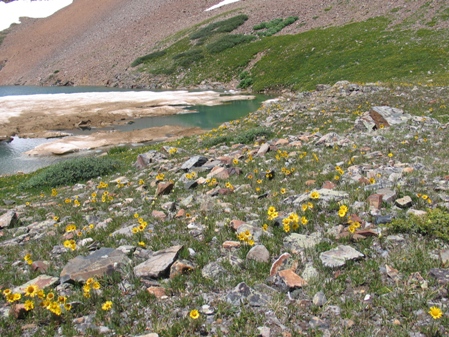
Green Lake, Gunnison County, Colorado
Alpine
above timberline
When we get above timberline we are in the realm of high peaks and passes. This is commonly called tundra.
There are no trees; the ground is rocky and gravelly, covered in scree or talus. The soil is poor, the sun is strong and the wind blows constantly. Moisture is from snowmelt.
Despite the harsh environment and the very short growing season that the flowers have to survive, there is an incredible variety and abundance of flowers. They have adapted by growing low to the ground and producing seeds rapidly.
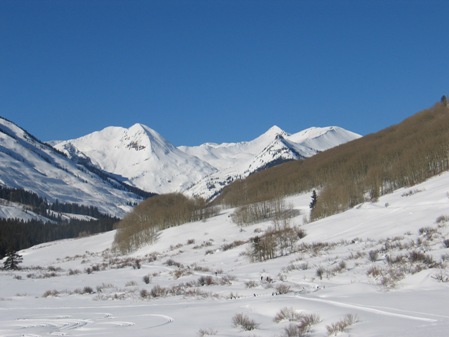
Slate River Valley, Gunnison County, Colorado
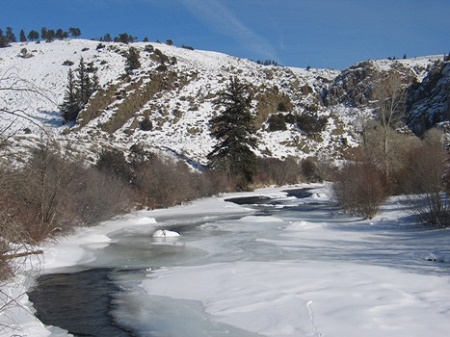
Taylor River, Gunnison County, Colorado
Climate
The elevations given here are approximate; a sunny south-facing slope will support different plants from a shadowy north-facing one at the same altitude. And that brings us to the climate.
All of the above pictures were taken in summer. The climate at the higher elevations of the Rocky Mountains is sunny 300 days of the year but the summer is brief and the winter is long, cold and snowy. At lower elevations it is sunny, hotter and much drier year round.
Temperature and elevation are the the two main factors that influence where and when plants can grow. As the elevation goes up, the temperature goes down. Other factors that influence blooming are wind, snow-pack, precipitation, insects, fire, and disturbance. Thus, an abundance of flowers may not occur at the same time in the same place every year. Some flowers will be in bloom for only a day, or a week, others for months.
There is plenty of moisture and plenty of warmth in the Rockies, but not in the same place at the same time, so survival for a plant means adaptation.